How Many Tectonic Plates are There?
 Michael Anissimov
Michael Anissimov
The Earth is generally considered to have 15 major tectonic plates, seven or eight of which are primary plates, and the others are smaller, secondary plates. The primary plates are the African Plate, the Antarctic Plate, the Eurasian Plate, the Indo-Australian Plate, the North American Plate, the Pacific Plate and the South American Plate, with the Nazca Plate sometimes considered a primary plate instead of a secondary plate. The secondary plates are the Arabian Plate, the Caribbean Plate, the Cocos Plate, the Indian Plate, the Juan de Fuca Plate, the Philippine Sea Plate, the Scotia Plate and sometimes the Nazca Plate. In addition, there are dozens of minor, tertiary plates. Just as there is no consensus about whether the Nazca Plate is a primary or secondary plate, there is no agreement about exactly how many tertiary plates there are, but scientists have identified about 58 of them.
Theory of Plate Tectonics
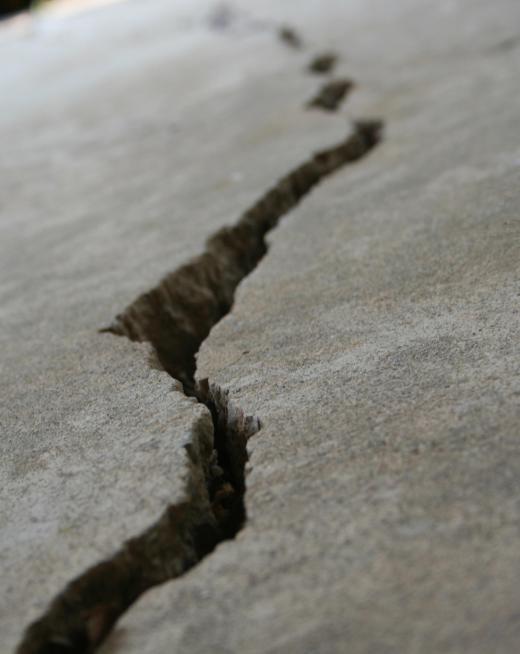
Tectonic plates are great slabs of rock that form the Earth's top layer, called the lithosphere. Both the continents and the oceans rest on tectonic plates, which float on the asthenosphere, the superheated molten rock below. Scientists believe that over millions of years, these tectonic plates float around, driven by convection currents in the asthenosphere, gathering into supercontinents and scattering again. This is called the theory of plate tectonics. Tectonic plates move about as fast as a person's fingernails grow — about 2 to 4 inches (5 to 10 cm) per year.
Primary Plates
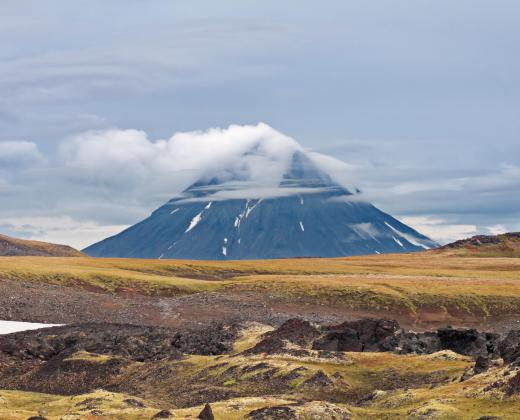
Although primary plates often share names with continents or oceans, their boundaries do not simply match those areas. For example, the North American Plate includes Greenland, which typically is associated with Europe. Each of the primary plates also includes areas under one or more oceans. The largest primary plates are the Antarctic Plate, the Eurasian Plate and the North American Plate. The Pacific Plate includes most of the Pacific Ocean as well as part of Southern California.
Secondary and Tertiary Plates

Some scientists classify primary plates and secondary plates together under the term "major plates." Of the plates typically classified as secondary plates, the Arabian Plate and the Indian Plate include the largest areas of land. Tertiary plates are smaller parts of primary or secondary plates that have broken off and are being broken up over time. These are often grouped with their associated primary or secondary plates.
Movement Along Plate Boundaries
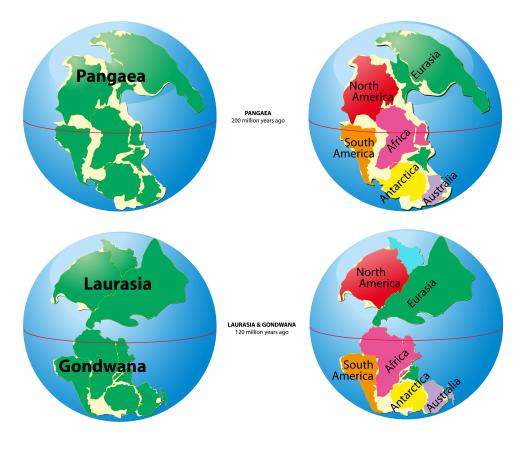
When adjacent plates move, they might move away from each other, toward each other or in parallel directions along their boundary. This movement can cause an earthquake and might create a geological formation. When the plates move away from each other, called divergent movement, they can create rift valleys on land. In the ocean or sea, they can create ridges or volcanic islands, which occur when the spreading sea floor provides an opening for molten lava to rise out of the earth.
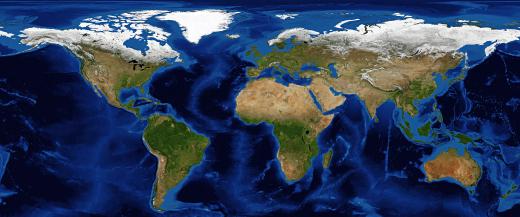
Convergent movement is when the plates move toward each other. As the plates collide, one might be forced under the other, or they both might be forced upward. Two plates converging under the ocean can cause islands to be formed. An oceanic plate colliding with a continental plate can form mountains near the coast. Two continental plates colliding can form a mountain chain, such as the Indian Plate and the Eurasian Plate forming the Himayalas.
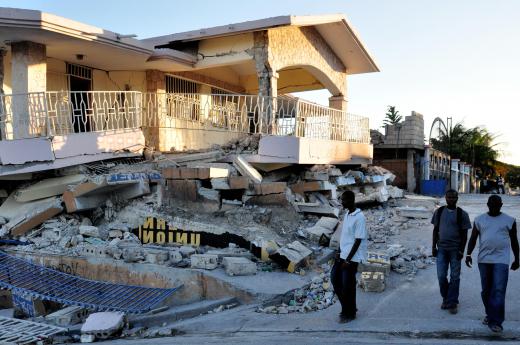
Adjacent plates sometimes move in parallel directions along their boundary, which is called a strike-slip fault. For example, the Pacific Plate moves northward as the adjacent North American Plate moves southward along the San Andreas fault in California. Although movement along fault lines such as the San Andreas does not create formations such as mountains or valleys, it does cause frequent earthquakes.
AS FEATURED ON:
AS FEATURED ON:

















Discussion Comments
There are seven main tectonic plates on earth.
There are actually 1 million plates.
My last post had 52 (wrong) when the answer seems to be 55. I think this will actually help.
I start to wonder now if the real answer is 42 (as per the Hitchhiker's Guide).
Why 55? Because plate tectonics is still a relatively new science (having replaced the theory of continental drift in the late 1950s and early 1960s), there is some dispute about the actual categorization of plates into the three levels. Most experts do agree that there are seven primary plates that make up the majority of the earth’s surface and the Pacific Ocean. These plates are the African Plate, the Antarctic Plate, the Eurasian Plate, the Indo-Australian Plate, the North and South American Plates, and the Pacific Plate.
The seven secondary plates are much smaller. They may appear on a map of major tectonic plates, but it is easy to see that they are insignificant in terms of land mass, with the exception of the Arabian Plate. The other six secondary plates are the Caribbean, the Cocos, the Juan de Fuca, the Nazca, the Philippines Sea, and the Scotia.
Almost all the tertiary plates are microplates, very small in a global sense. Scientists are still arguing over whether these tiny plates should be considered separate or as part of the major plate with which they are associated.
There are a few tertiary plates that are considered major and are rifting apart. These are the Capricorn and Indian Plates of the Indo-Australian and the Nubian and Somali Plates associated with the African. Most of the 14 major plates, have 1-5 tertiary plates associated with them.
The largest groupings are the Eurasian Plate, which has 17 of these microplates; the Pacific Plate, with 14 tertiary plates, and the Indo-Australian Plate, which has 10 tertiary plates. The Arabian, Nazca and Scotia Plates do not have any recognized tertiary plates.
Plates aren't "in" the mantle. The maps you've seen are made by tons of different people, not all scientists that actually specialize in tectonics. there's no consensus on how many because there are some plates forming and no one has really drawn the line as to when it's a plate (similar to debate when does fetus really become a human kind of thing).
We can all have our opinions. Eventually they'll come to a consensus - like all things in science - and decide where to draw that line. Then you can say how many for sure.
Actually, there are 15 major plates.
Since all the answers are different, I cannot believe any of you.
well there are definitely not 52 plates on the maps i have seen.
how can there be 15 if the article states there are 14 major and 38 minor?
there are 15 main plates.
very informative. thank you.
i don't get this. all i asked is for how many plates are there altogether. I only needed a one-word answer!
Wow. That's a lot of plates in the mantle.
Strictly speaking, a tectonic plate is formed by slabs of lithosphere (comprising the crust and rigid part of the upper mantle) which float upon, and may penetrate, the asthenosphere (convecting mantle) in subduction zones.
Post your comments